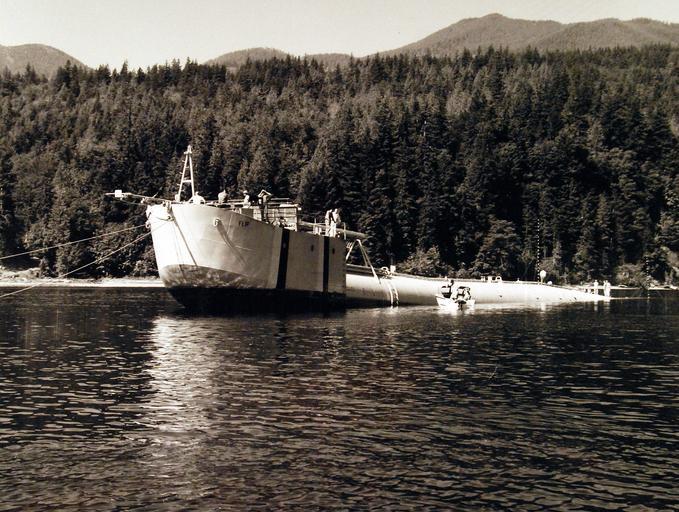MAKE A MEME
View Large Image

| View Original: | 330-PSA-207-62_(USN_1061428).jpg (2884x2176) | |||
| Download: | Original | Medium | Small | Thumb |
| Courtesy of: | www.flickr.com | More Like This | ||
| Keywords: outdoor vehicle boat 330-PSA-207-62 (USN 1061428): Floating Instrument Platform (FLIP). Bow view of FLIP as it is in the horizontal position. Photograph released August 7, 1962. Master caption: A new type of oceanographic research vessel – Floating Instrument Platform (FLIP) – is undergoing operational tests by the U.S. Navy in Dabob Bay, near Seattle, Washington. FLIP has been constructed for the Marine Physical Laboratory of Scrupps Institution of Oceanography under contract to the Office of Naval Research. The craft can literally flip from a horizontal to a vertical position while at sea. FLIP is flipped into the vertical position by flooding its long aft section with sea water. Only its “four story” bow section remains above the water. To return the vessel to a horizontal position, high pressure air blows the water out of the submerged section. FLIP will be used for studies of wave motion, marine biology, internal waves, sound waves, and other phenomena. The vessel has accommodation for four people and can carry enough supplies to last for about two weeks. In the vertical position, the research laboratories, living quarters, and engine room are above the water. Two diesel engines supply electrical power for air conditioning and other miscellaneous electrical equipment. Two waterfront tubes permit the crew to descent to 150 feet below the water. Upon completion of the tests in Dabob Bay, FLIP will be towed to San Diego, California, to begin its sea voyages. (10/6/2015). 330-PSA-207-62 (USN 1061428): Floating Instrument Platform (FLIP). Bow view of FLIP as it is in the horizontal position. Photograph released August 7, 1962. Master caption: A new type of oceanographic research vessel – Floating Instrument Platform (FLIP) – is undergoing operational tests by the U.S. Navy in Dabob Bay, near Seattle, Washington. FLIP has been constructed for the Marine Physical Laboratory of Scrupps Institution of Oceanography under contract to the Office of Naval Research. The craft can literally flip from a horizontal to a vertical position while at sea. FLIP is flipped into the vertical position by flooding its long aft section with sea water. Only its “four story” bow section remains above the water. To return the vessel to a horizontal position, high pressure air blows the water out of the submerged section. FLIP will be used for studies of wave motion, marine biology, internal waves, sound waves, and other phenomena. The vessel has accommodation for four people and can carry enough supplies to last for about two weeks. In the vertical position, the research laboratories, living quarters, and engine room are above the water. Two diesel engines supply electrical power for air conditioning and other miscellaneous electrical equipment. Two waterfront tubes permit the crew to descent to 150 feet below the water. Upon completion of the tests in Dabob Bay, FLIP will be towed to San Diego, California, to begin its sea voyages. (10/6/2015). | ||||